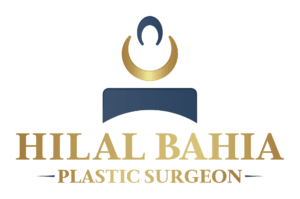
Some men can suffer from a condition called gynaecomastia (man boobs), where there is an excess of breast tissue in the chest. A breast reduction procedure can improve the appearance of the chest and increase self-confidence.

Gynaecomastia (man boobs or male breast enlargement) is a common condition. Most men with breast enlargement have no obvious cause. It can lead to feelings of self-consciousness, particularly when swimming or when undressing in front of others.
Surgery can remove the fatty tissue, the more firm breast tissue and sometimes excess skin from the chest/breasts, to help improve the appearance of the chest. While many boys can have enlargement of one or both sides of the chest/breast during the teenage years, most will have outgrown this by early adulthood. Up to 30% of older men may also develop gynaecomastia.
There is usually no underlying cause for the breast enlargement, however it can sometimes be caused by certain medicines (for high blood pressure, heart disease and prostate cancer), drugs (such as cannabis and anabolic steroids), some diseases (such as liver failure and some cancers) and some very rare congenital abnormalities. These causes should be excluded or investigated before any surgery is carried out.

Male breast reduction surgery is carried out under a general anaesthetic as a day case procedure, or with an overnight stay in hospital.
Different procedures can be used depending on the amount of tissue needing to be removed. where there is an excess of fatty tissue, with good skin elasticity, liposuction, with minimal scars can remove sufficient tissue to flatten the chest.
For firmer breast tissue, a minimal scar around the edge of the nipple/areola may be used. Occasionally for much larger gynaecomastia, a transverse scar may also be required.
The skin wounds are closed with absorbable sutures, and the resulting scars generally soften and fade over the following months.

Following discharge from hospital, simple pain killers are usually all that is required. Two to four weeks off work (depending on how physical the occupation) and best to refrain from driving for an average of about 2 weeks
.
Follow up appointments are arranged by the hospital prior to discharge. The first at one week to see the specialist plastic surgery nurses and another at six weeks with your plastic surgeon to ensure all is well and that you are happy with your result.

In individuals whose breast is made up of mainly fatty tissue, liposuction is the usual
treatment. A general anaesthetic is most commonly used, but treatment can often be carried out as a day case.
Small incisions are made, excess fatty tissue is removed and the wounds are then closed. Some degree of skin tightening or shrinkage can occur, particularly in younger patients with good quality, elastic skin, but the results of liposuction can sometimes be unpredictable. If there is an excess of firm, fibrous glandular tissue, then this may need to be cut away by a more formal procedure.

Following liposuction, there will be swelling and bruising for about 2 weeks and it can sometimes be difficult to assess the full effect of the operation for a few months.
An elasticated garment can sometimes help reduce the swelling over the first 7-10 days. It is advisable to refrain from exercise for about 3 – 4 weeks and it may take up to 6 – 8 weeks to return to normal activities.
The potential complications of the liposuction are relatively rare. They include inadequate removal of breast tissue, an uneven contour to the chest and reduced nipple sensation. bruising and painful swelling. Bleeding (haematoma) is a rare complication.

A more formal, open, surgical procedure may need to be carried out if there is felt to be an excess of firm, fibrous breast tissue present, which may not be removed by liposuction alone. This is usually carried out under a general anaesthetic and require an overnight stay in hospital.
An incision is made around the edge of the areola of each nipple, and the excess breast tissue is cut away from behind the nipple and underneath the chest skin. This may be performed in association with liposuction.
This will leave a scar, around the edge of the areola of the nipple. Bigger reductions requiring the removal of much bigger amounts of breast tissue and skin may require larger incisions, thereby leaving bigger and more obvious scars. The surgery may sometimes produce new scar tissue, which often forms behind the nipples and can be firm in nature and may require revisional surgery to remove.
If an excision has been performed, rather than liposuction, then a haematoma (collection of blood under the skin at the site of surgery) can occur and require a return to the operating theatre in order to deal with this. There may be a flattened appearance to the chest and nipples and occasionally the nipples may appear sunken.
The sensation or circulation to the nipples may be affected resulting in numb nipples or very rarely, loss (necrosis) of all or part of the nipple. Other potential side effects or complications may include shooting pains, localised tissue excess, indentations, dog ears, hard red lumpy scarring (hypertrophic/keloid scars or loss of pigmentation of the areola – especially in darker skinned individuals), adverse scar positioning, asymmetry, and dissatisfaction with the aesthetic outcome.


Following an open gyanaecomastia excision procedure, there will be swelling and bruising, most of which should resolve in the first few weeks.
The scars may take about 2 weeks to heal, but may take several months to soften and fully mature.
While this length of time off work may be sufficient for a desk-based job, it may be advisable to take a little longer for more physical work and refrain from heavy, upper body exercise for about 6 – 8 weeks.


© 2024 Hilal Bahia | Website by Internet Creation Ltd